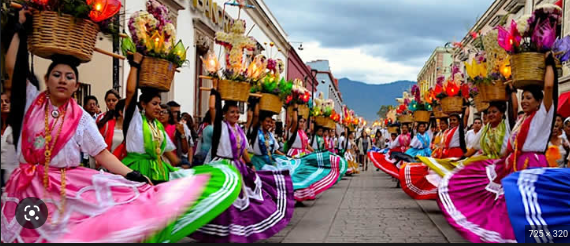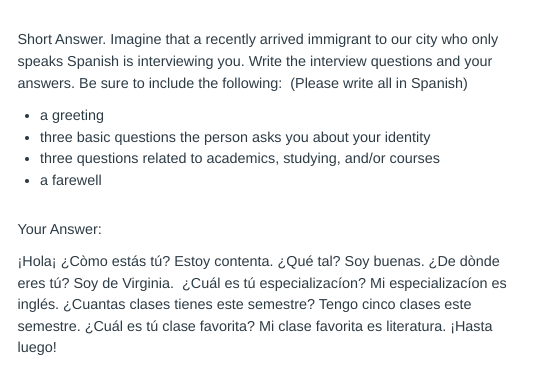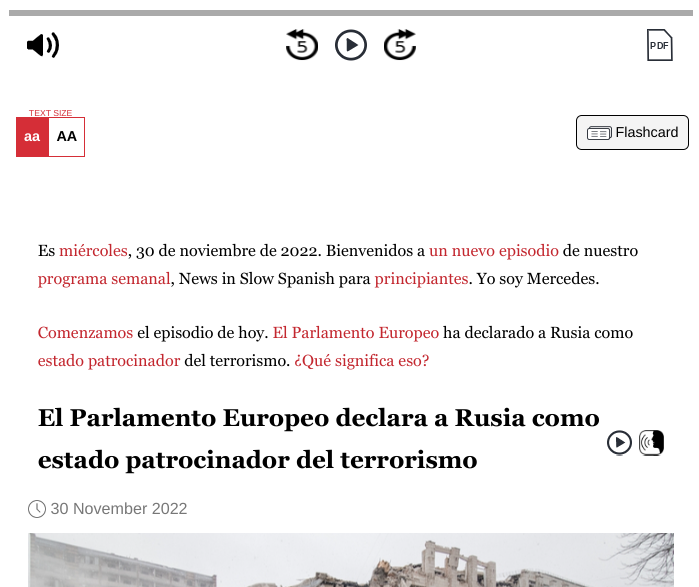Exploring Culture
In the video above, titled “12 meses, 12 fiestas en Espana.” We learn of different months where people in Spain celebrate the Spanish culture. This informative video gave me a perspective on traditions that different cultures would consider abnormal.
As I learned about different cultural celebrations, it was fun to discover the uniqueness of each holiday. These holidays in comparison to the United States, are celebrated for whole months not just days such as Christmas, Thanksgiving, or Valentine’s day. One fiesta they celebrate in June is called “Noche De San Juan.” People from all over gather on beaches in an eve of feast in honor of Saint John the Baptist. Other Fiestas such as “Cabalgata de Reyes” include a parade filled with live music, floats, and beautiful costumes. In my journey of exploring the culture, it has allowed me to expand my knowledge of the days and months that are important to the Hispanic community. This video sparked diverse thoughts and broadened my perspective on the word. Although, these traditions may not be familiar to us, as individuals we are open to changing and accepting different cultures and norms.
Engaging in Communities

In English, give a brief description of the value of, and importance of, engaging in your immediate community and the global community.
The value that comes from participating and engaging in your community is the great relationships that develop from interacting with your fellow neighbors, friends, co-workers and community. You can meet people who share the same interest and goals and is also a great opportunity for social and business networking in the community. The Internet allows us to make friends all over the world on many different media platforms which is such an importance when it comes to not only learning about new cultures and customs that are practiced on our planet but the ability to appreciate the similarities and differences when learning about how others people around the world interact with their communities, With appreciation comes respect which I believe is ideal for people to learn acceptance to be more open-minded when engaging in your local and global community and to leave the bias we sometimes inherit or develop in our lives and look past these limitations so you can have the greatest experience when being a participant in any community.
Interpersonal Communication

During the semester, my professor allowed us to interact with each other in a discussion board. We were able to discuss assigned topics and express our thoughts and opinions on other people’s posts. Apps like Duolingo have helped me understand simple Spanish words and conversation starters typically used in beginner Spanish. Interpersonal speaking activities, such as assignments on LingoLearning, allow me to record myself speaking in Spanish on different topics and review my pronunciation, dictation, and overall comprehension as I speak.
In my experience with discussion boards, although mostly written in English, they allowed me to connect with my fellow classmates on topics such as: Fiestas and celebrations, social media, and different types of greetings in the Hispanic culture. As the semester progressed, we had to write a sentence or two completely in Spanish which was ultimately an great practice. One challenged I faced was correctly conjugating the verbs in my sentences, which appends to the comprehension of what I am trying to say. On the other hand, Duolingo allowed me to practice writing sentences and understand different vocabulary words. The more I got involved, the more it adapted to my knowledge and progress in certain subjects, which ended up being harder to understand. I resolve conflicts by looking for relevant clues in the sentence and putting pieces together. When I had to record myself speaking, there were some scenes where difficulties arose because I would stutter or not be confident speaking Spanish.this. I would get past this by speaking slowly and collecting my thoughts. I think next time, I will find different options that would benefit my communication skills.
Presentational Speaking
Events like Flip grid allowed me to have conversations with my professor in Spanish. During this process, my professor would ask questions, which we would answer promptly, and then ask questions for him to answer. This is a great exercise for communicating in full without pauses or written scripts.
For example, different modules contain different vocabulary that we have practiced beforehand. When it was time to have a conversation with my professor, I had to act if I was having a realistic conversation, remembering certain responses and conjugations. One of the challenges I faced was around my fluency. Sometimes, I would get trapped in my translation and hesitate which would cause me to stumble on my words. I overcame this challenge by letting my words flow, and allowing myself to relax and realize mistakes are common. In my opinion, my responses to my classmates and the questions they posed on the flipped grid were something to look forward to. In the future, when I become more advanced, I hope to build a faster pace while speaking Spanish.
Presentational Writing

Sometimes we have to do presentational writing assignments as part of our exams. The assignment is short but descriptive and includes basic questions and responses.
Obviously, written communication becomes more difficult over time. As it got more complex, so did my vocabulary because it opened up a world of more Spanish words and concepts. Each written assignment strengthened my ability to write in Spanish and allowed me to write more fluently in a formal manner. As a beginner, I had a hard time adding accents to certain words. Now that I understand the importance of accents and how certain words are pronounced. This event let me overcome this challenge by writing down the word with the accent, repeatedly to try and remember it’s location.
Interpretive Listening
Since I love music so much, I use music as a listening activity in Spanish. Music is a universal language, as we are able to interpret passion and feeling from songs. Spanish music has created a wide range of styles, passions and communities.
One song that I became overly familiar with is called “The Spanish alphabet song”, this song created a tune in my head to help me memorize the alphabet in Spanish. Once I kept practicing with the recording, I got used to pronouncing words. Eventually, it got easier. Another song that contributed to my interpretive listening was “Vivir mi vida,” a very commonly known Spanish song. When it comes to singing, my strategy is to change the playback speed to something comfortable, then listen and repeat the lyrics. I think the most difficult part trying to pronounce the words I was unsure of, but I got past this by continuing to listen how the artist pronounced the word. I find the different types of music and background instruments to be the most compelling when listening to them. My overall takeaway from the listening experience is that music is universal and they are many types of diverse types of music we can all enjoy!
Interpretive Reading
Relating to interpretive reading, I participated in News in slow Spanish. This site allows me to practice reading in Spanish at a comfortable pace. It also provides flashcards for words or sentences that I need to review while reading.
The thing I find most challenging is reading complex sentences without knowing their meaning or pronunciation. What helped me overcome this was using a Spanish dictionary if I absolutely had no clue what was being said and couldn’t piece words together. The most fun part involves learning new words and their meanings to add to my Spanish vocabulary. As complicated as it is, reading news articles has really improved my ability to read in Spanish. In each section, I found the text increasingly easy to understand.
